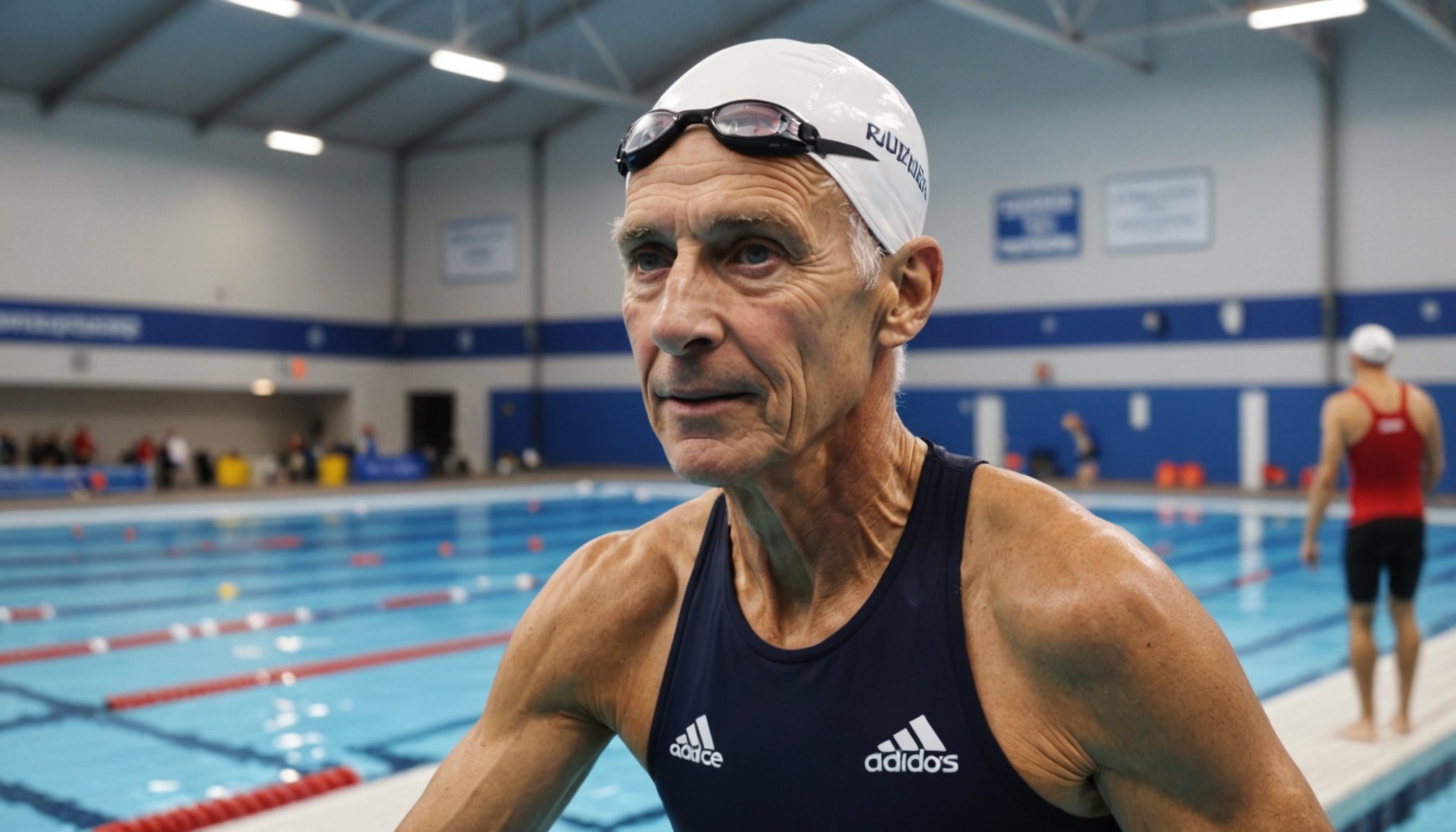Overview of Adaptive Training Programs
Adaptive training is a revolutionary approach in competitive swimming, focusing on the needs of aging swimmers. The essence of adaptive training lies in tailoring workouts to accommodate the physical and psychological changes that come with age. This ensures that swimmers continue competing without compromising their health.
One of the key purposes is to enhance performance while reducing the risk of injury. As swimmers age, their flexibility, strength, and recovery rates change, necessitating a shift from traditional training methods. By catering to these shifts, adaptive training helps maintain optimal swimming techniques and stamina.
Topic to read : Boosting High-Altitude Ski Performance: The Power of Periodic Breathing Techniques
Unlike conventional programs, which often follow a one-size-fits-all methodology, adaptive training is bespoke. It incorporates varied techniques such as modified intensities or integrated rest periods to maximize efficiency. For aging swimmers, these adjustments are crucial. Adaptive training taps into advanced strategies, emphasizing gradual progression and personalized feedback.
The benefits are profound. Adaptive training not only aids in preserving the physical form but also boosts the mental resilience of swimmers. Tailored workouts empower them with the confidence to pursue competitive swimming even as they age, fostering a lifelong passion for the sport.
Also to see : Unlocking Athlete Performance: The Role of Continuous Heart Monitoring Devices in Predicting Overtraining
Benefits of Adaptive Training for Older Swimmers
Adaptive training is crucial for older swimmers, offering performance enhancement and injury prevention. Tailored exercises cater to individual abilities and needs, significantly boosting performance. By focusing on personalised workouts, swimmers can address specific areas for improvement, resulting in better technique and endurance.
Moreover, adaptive training plays a vital role in reducing the risk of injuries. Through age-appropriate workouts, swimmers learn to manage stress on their joints and muscles effectively. Incorporating gentle, yet effective movements, adaptive training mitigates the likelihood of overexertion, a common cause of injuries in older athletes.
Enhanced flexibility and strength are central components of this training, further supporting injury prevention. Improved flexibility ensures greater range of motion, allowing swimmers to glide through water with ease. Meanwhile, increased strength supports muscle stability, vital for maintaining good posture and technique.
In summary, adaptive training benefits older swimmers by enhancing their performance, reducing injury risks and ensuring they maintain flexibility and strength. This holistic approach allows swimmers to enjoy their sport safely and confidently, making it a sustainable choice for long-term participation.
Expert Opinions on Adaptive Training Programs
Swimming coaches are integral to developing effective adaptive training programs. Several highly regarded coaches have shared their expert insights on the matter. According to them, these programs must tailor activities to individual needs, ensuring that each swimmer’s unique strengths and weaknesses are addressed. This personalised approach allows athletes to maximise their potential without the risk of injury.
Aside from coaches, athlete testimonials frequently highlight the benefits of adaptive training. Older swimmers, for instance, often note improvements not only in performance but also in overall well-being. One seasoned swimmer mentioned that adaptive training allowed them to continue competing well into their senior years, providing a competitive edge while minimising strain.
Expert recommendations typically encompass a few key strategies. First, maintaining flexibility in training routines can accommodate unexpected changes in a swimmer’s condition or environment. Second, incorporating technology helps track performance improvements and identify areas that need focus. Finally, rest and recovery are emphasised as critical components to prevent burnout and support long-term success.
Practical Strategies for Implementing Adaptive Training
Adapting training approaches to suit individual needs can greatly enhance effectiveness. Training strategies should focus on incorporating varied swimming techniques, catering to the diverse skill sets of swimmers. For instance, employing different strokes and drills not only improves versatility but also addresses personal weaknesses.
To begin designing a personalized training program, follow these steps:
-
Assessment and Goal Setting: Identify current abilities and define specific targets. This ensures training strategies align with personal objectives.
-
Program Development: Integrate a mix of exercises and swimming techniques that address both strengths and weaknesses. Diversifying drills ensures a well-rounded skill enhancement.
-
Implementation: Gradually introduce changes to the routine, allowing the body time to adapt. Consistency is crucial for effective implementation.
Monitoring progress is essential. Frequent evaluations help in determining the program’s effectiveness. Adjustments based on these assessments are important. If certain aspects are not yielding the desired improvement, tweak techniques or training strategies accordingly. Regular feedback sessions can also motivate and engage swimmers, fostering a more personalised adaptive training experience. With these strategies, swimmers can achieve their full potential while enjoying the learning process.
Injury Prevention in Aging Competitive Swimmers
Ageing athletes, particularly competitive swimmers, face unique challenges when it comes to injury prevention. As you age, the body’s resilience decreases, increasing the risk of injuries. Some common injuries among aging swimmers include shoulder pain, knee discomfort, and lower back strain. Understanding these issues is essential for implementing effective safe training practices.
Flexibility and strength training play pivotal roles in managing and preventing injuries. Regular flexibility exercises help maintain joint range of motion, thus reducing strain during swimming. Strength training, especially in the core and shoulder areas, supports physical health by promoting better body mechanics and stability in the water.
For thriving in training and competition, aging swimmers should adopt several safe practices. Prioritizing proper warm-ups and cool-downs can prepare the body for intense activity and aid recovery. Listening to one’s body is vital; avoiding over-exertion can prevent wear and tear. Lastly, seeking guidance from coaches familiar with senior athletes ensures that training regimes are appropriate and adapted to age-related needs. These practices can make the water a place of health rather than harm.
Resources for Further Learning
For individuals eager to delve deeper into adaptive training, a wealth of educational resources is available to support their journey. Renowned swimming organizations like USA Swimming offer comprehensive guidelines and workshops, specifically designed to enhance adaptive techniques for swimmers of all ages.
Navigating through the world of training literature, several recommended books and articles focus on training for aging athletes. These materials provide invaluable insights into modifying traditional methods to cater to older swimmers’ unique needs. They often cover aspects like endurance, flexibility, and proper recovery techniques.
Furthermore, numerous online platforms offer courses and workshops tailored to improving adaptive skills in swimming. Websites such as Swim Smooth and Total Immersion provide training materials through interactive courses that encourage adaptive techniques, ensuring inclusivity and accessibility for diverse age groups. Many of these resources are crafted by experts in the field, offering a blend of practical guidance and motivational support.
By leveraging these resources, swimmers can explore various strategies to enhance their skills, build confidence in their abilities, and continue thriving in their swimming endeavours, regardless of age.











